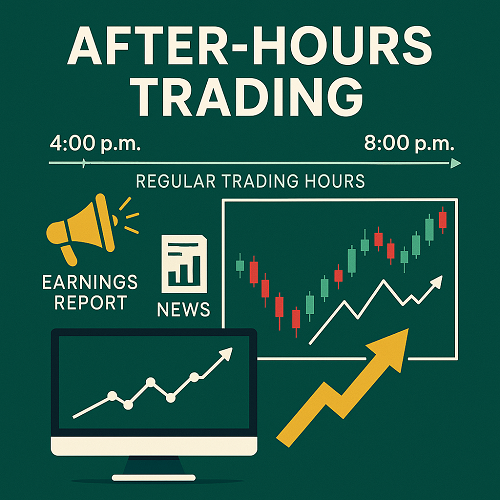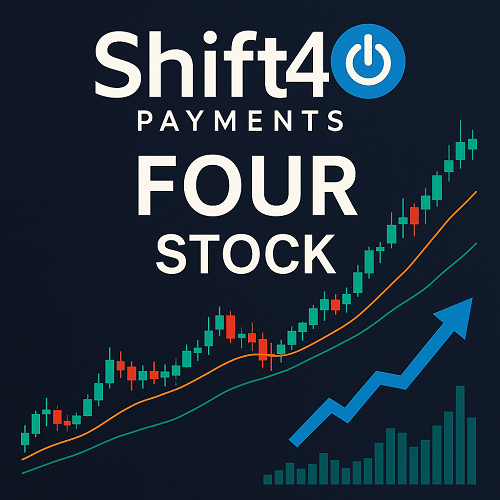What Happens When the Market “Closes”
Most traders think the market shuts down at 4:00 p.m. Eastern Time — but that’s only half the story with regard to New York Stock Exchange trading hours.
After the bell, another market quietly comes to life: the after-hours session. It’s where professional investors, hedge funds, and informed retail traders react to breaking news, earnings announcements, and global developments that unfold when traditional exchanges are closed.
Learning how to navigate after-hours and pre-market trading can help you act faster, manage risk better, and gain a crucial edge in volatile environments — but only if you understand how these sessions truly work.
This guide breaks down every aspect of extended-hours trading, from mechanics and market structure to risks, strategies, and real-world examples — all in one comprehensive resource.
What Is After-Hours and Pre-Market Trading?
After-hours trading refers to buying or selling securities after the regular market session closes, typically between 4:00 p.m. and 8:00 p.m. ET in U.S. markets.
Pre-market trading occurs before the regular session opens, generally from 4:00 a.m. to 9:30 a.m. ET, depending on your broker.
These sessions exist thanks to Electronic Communication Networks (ECNs) — automated platforms that match buy and sell orders directly, without the need for a traditional exchange floor.
For Canadian investors, the Toronto Stock Exchange (TSX) offers post-trading from 4:15 p.m. to 5:00 p.m. ET, allowing limited order types and lower liquidity.
Why After-Hours Trading Exists
Extended-hours trading was developed to let institutional traders and active investors respond to news and events occurring outside regular hours — for instance:
- Corporate earnings releases (usually after the close or before the open)
- Economic data or geopolitical headlines from other regions
- M&A activity or analyst upgrades/downgrades
- Futures or commodity moves influencing sentiment
For example, if Apple reports quarterly earnings at 4:10 p.m. ET, traders can react instantly instead of waiting until the next morning.
How After-Hours Trading Works
Electronic Communication Networks (ECNs)
When you place an after-hours order, it’s routed through an ECN such as ARCA or INET, which electronically matches buy and sell orders from other participants.
Because fewer market makers operate in these sessions, liquidity is thinner and bid-ask spreads are wider, making execution less predictable.
Order Types
Most brokers — including TD Direct Investing — restrict after-hours trading to limit orders only, meaning you set the maximum (buy) or minimum (sell) price you’re willing to accept.
Market orders are usually disabled to prevent slippage.
Execution
Trades only occur if there’s a matching order on the network. If no one agrees to your price, the order won’t fill. Many brokers cancel unfilled after-hours orders when the market reopens.
Advantages of Trading Beyond Regular Hours
While the risks are real, there are clear advantages for those who know how to use the time wisely:
- ⚡ React faster to breaking news: You can enter or exit positions as news hits instead of waiting for the open.
- 💼 Get ahead of overnight gaps: Extended sessions reveal how markets might open the next day.
- 🌎 Trade across global time zones: Take advantage of moves in Europe or Asia that impact North American equities.
- ⏰ Flexibility: If you can’t trade during the day, these sessions offer additional windows of opportunity.
The Risks of After-Hours and Pre-Market Trading
Lower Liquidity
Far fewer participants are active, so large orders can move prices dramatically. Even blue-chip stocks can show erratic price swings.
Wider Spreads
With limited bids and asks, spreads can widen several times compared to regular hours, increasing transaction costs.
Price Volatility
Rapid moves — often based on limited information — can lead to emotional decision-making and poor fills.
Partial Fills or No Execution
Orders may go unfilled entirely or only partially execute if no counterparties match your price.
Event Risk
Breaking headlines or overnight earnings surprises can trigger massive price gaps that either amplify profits or cause sharp losses.
Best Practices for Safer Extended-Hours Trading
To succeed, you need structure, discipline, and preparation:
- Always use limit orders — never market orders.
- Check your broker’s hours and restrictions (TD, Interactive Brokers, Fidelity, etc.).
- Plan trades around known events like earnings calls, Fed announcements, or geopolitical updates.
- Watch real-time Level II data to gauge liquidity and price depth.
- Start small: Trade smaller position sizes until you’re confident.
- Use alerts to monitor price movements while away from your screen.
- Protect capital: Set stop-loss limits once regular hours resume.
Extended-Hours Across Different Markets
U.S. Equities (NYSE, NASDAQ)
- Pre-market: 4:00 a.m. – 9:30 a.m. ET
- After-hours: 4:00 p.m. – 8:00 p.m. ET
- Note: Each broker sets specific eligibility and fees.
Canadian Equities (TSX)
- Post-trading session: 4:15 p.m. – 5:00 p.m. ET
- Limited participants and execution volume.
Forex Markets
- Open 24 hours a day, 5 days a week, but liquidity dips during late Asian hours and weekends.
- Spreads widen during these “off-peak” windows — similar to equity after-hours conditions.
Crypto Markets
- Operate 24/7, with constant price discovery.
- Volume and volatility fluctuate by region; the quietest periods often fall between 2:00 a.m. and 6:00 a.m. ET.
Tools and Data for Monitoring Extended-Hours Sessions
- Brokerage platforms: Ensure your broker provides live ECN data and extended-hours charting.
- News feeds: Use Reuters, Bloomberg, or Benzinga Pro for real-time earnings and macro alerts.
- Pre-market scanners: Track stocks gapping up/down before the open.
- Volume heat maps: Identify where liquidity is concentrated.
- Mobile alerts: Automate trade notifications during non-standard hours.
Real-World Examples
Example 1: Earnings Reaction
Netflix reports strong subscriber growth at 4:05 p.m. ET. Shares jump 7% in the after-hours session as traders rush in. By the next morning, much of the move is already priced in — those who reacted early captured the bulk of the gain.
Example 2: Forex and Central Banks
During the Asian session, the Bank of Japan unexpectedly cuts rates. USD/JPY spikes 200 pips before U.S. traders even wake up — an example of why overnight monitoring matters.
Example 3: Crypto Weekend Surge
A regulatory approval leak for Bitcoin ETFs hits on a Sunday afternoon. Prices surge 10% before the Monday open in traditional markets — crypto traders in the loop capitalize before institutions re-enter.
Key Takeaways
- Extended-hours trading lets you respond to news before others.
- Liquidity and spreads are your main constraints — manage them wisely.
- Limit orders and preparation are essential for risk control.
- Each asset class behaves differently, so adapt your strategy accordingly.
- The best traders plan, don’t chase — especially when trading after dark.
Frequently Asked Questions (FAQ)
Q1: Can I use market orders during after-hours trading?
No. Most brokers, including TD Direct Investing, only allow limit orders after hours to protect investors from unpredictable fills.
Q2: Are all stocks available after hours?
No. Only select securities — typically those with high liquidity and ECN participation — trade during extended sessions.
Q3: Is after-hours trading good for beginners?
It’s risky for new investors. Thin liquidity, volatile swings, and limited data make it best for experienced traders.
Q4: Do forex and crypto count as after-hours markets?
Technically, yes — they trade 24/5 (forex) and 24/7 (crypto) — but the same principles apply: lower liquidity and higher spreads at off-peak times.
Conclusion: Master the Hours Others Ignore
After-hours and pre-market trading open the door to opportunity — but they also demand precision.
Knowing when to act and when to stay out* separates professional traders from amateurs*.
If you learn the mechanics, manage risk properly, and use data-driven execution, you can trade intelligently beyond regular hours — turning market quiet into potential advantage.





 XAUT-USD
XAUT-USD  AMD
AMD  MARA
MARA  SHOP
SHOP  BULL
BULL  CL=F
CL=F